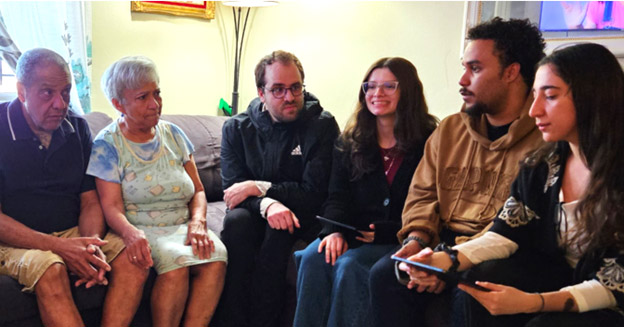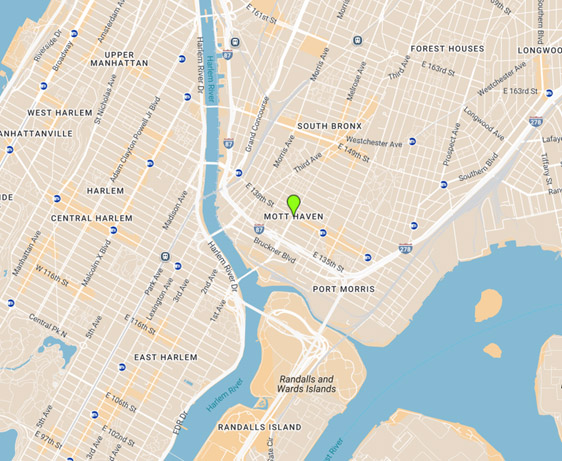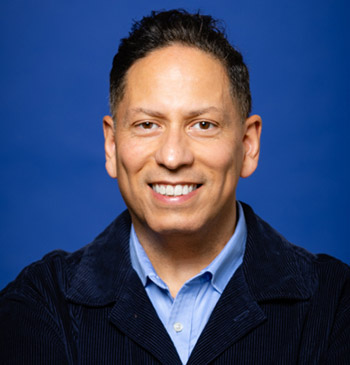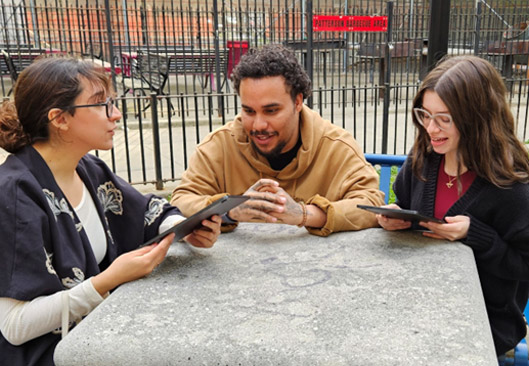Current Research
The Center for Latino Adolescent and Family Health (CLAFH)
Current Research
At CLAFH, we believe research plays a crucial role in identifying the root causes of health and health care inequities, providing evidence-based insights that can inform the kind of effective interventions, policy changes and resource allocation needed to achieve health equity for all.
Our research team designs, tests, refines and disseminates models of care that are nurse-driven, integrate clinical and social care, and effectively eliminate health and health care inequities.
Safe Families: Community Screening & Linkage to Prevent Overdose
A SAMHSA-sponsored initiative in Mott Haven, NYC
Closing the Gap in Access

For families in Mott Haven, accessing affordable, high-quality substance use prevention and treatment services remains a steep challenge.
Safe Families directly addresses these inequities through a nurse-driven, community-based approach. Grounded in the Screening, Brief Intervention, and Referral to Treatment (SBIRT) model, the program identifies risk early and links residents to timely care. By mobilizing families, health providers, and social service partners, Safe Families reduces the harms of untreated substance use and strengthens integration across health and community systems.
A Neighborhood on the Frontlines

Mott Haven, in the South Bronx, lies within the poorest congressional district in the continental United States. It is also one of the hardest-hit neighborhoods in the nation’s overdose epidemic. Emergency room visits and hospitalizations for substance use are nearly three times higher than the New York City average (NYC Department of Health, 2023).
“Safe Families shows how nurses, families, and communities can work together—supported by digital innovation—to prevent overdose and save lives.” Vincent Guilamo-Ramos, PhD, RN, FAAN, Executive Director, IPS: Professor, Johns Hopkins School of Nursing
Vincent Guilamo-Ramos, PhD, RN, FAAN, Executive Director, IPS: Professor, Johns Hopkins School of Nursing
Innovation in Action
A particularly innovative aspect of Safe Families is the use of cutting-edge care management technology to close gaps in substance use treatment and prevention screening, referral and follow-up. Through a partnership between CLAFH and Huddy Health, the project uses an optimized digital platform that facilitates:
- Proactive outreach: Recruiting families through trusted, community-based networks.
- Structured evaluation: Using validated screening and assessment tools to pinpoint risks and needs.
- Rapid linkage: Connecting residents in real time to prevention, treatment, and recovery services.
This new technology ensures that care is coordinated, responsive, and scalable across diverse community settings.

A Scalable Solution
At its core, Safe Families affirms that every family—regardless of circumstance—deserves access to timely, affordable, and effective care. By combining nursing leadership, proven prevention models, and advanced digital tools, Safe Families demonstrates a scalable solution for overdose prevention.
This initiative is not just saving lives in Mott Haven—it offers a framework that can be implemented in other neighborhoods nationwide struggling with the intertwined crises of substance use, limited access to care, and structural inequities.
Project Confianza
This CDC-sponsored five-year research project is exploring the factors that shape medical mistrust and trustworthiness (MTT) in the context of HIV prevention and care services for Hispanic/Latino gay, bisexual, and other men who have sex with men (HLMSM). Lessons from the research will inform nurse-driven interventions that address the clinical and social needs of HLMSM as a means of improving their engagement and retention in HIV services. Project Confianza operates in five geographic areas that align with the national Ending the HIV Epidemic (EHE) initiative’s priority jurisdictions and account for a significant burden of HIV incidence among HLMSM across the US: Los Angeles County, CA; Bronx County, NY; Bexar County, TX; Miami-Dade County, FL; and San Juan Municipio, PR. This multi-level, community engaged project collaborates with HLMSM, community leaders with strong community ties to the Hispanic/Latino (H/L) community and HLMSM, healthcare providers who serve HLMSM, academic partners, media and communication partners and other key stakeholders.
